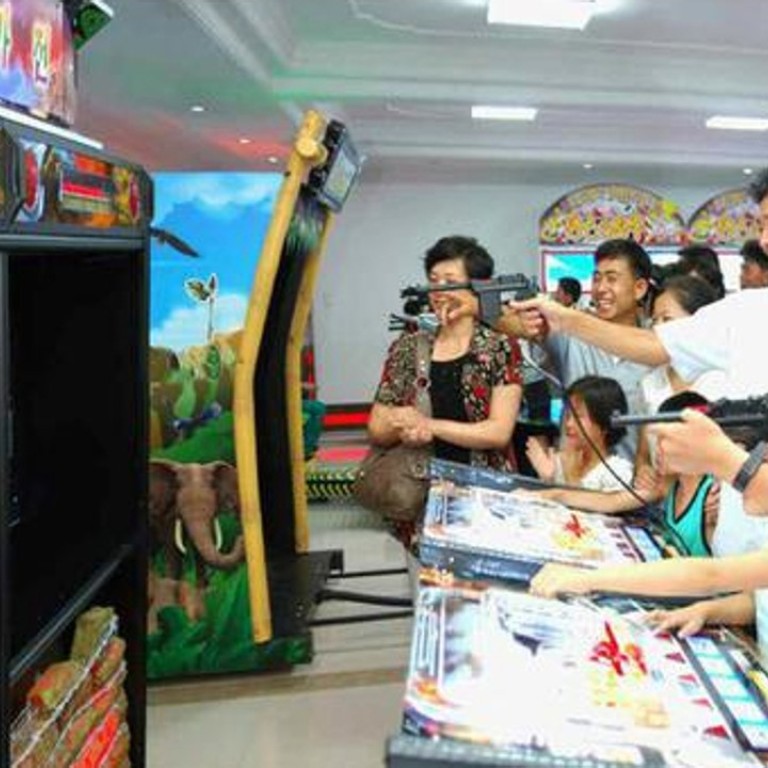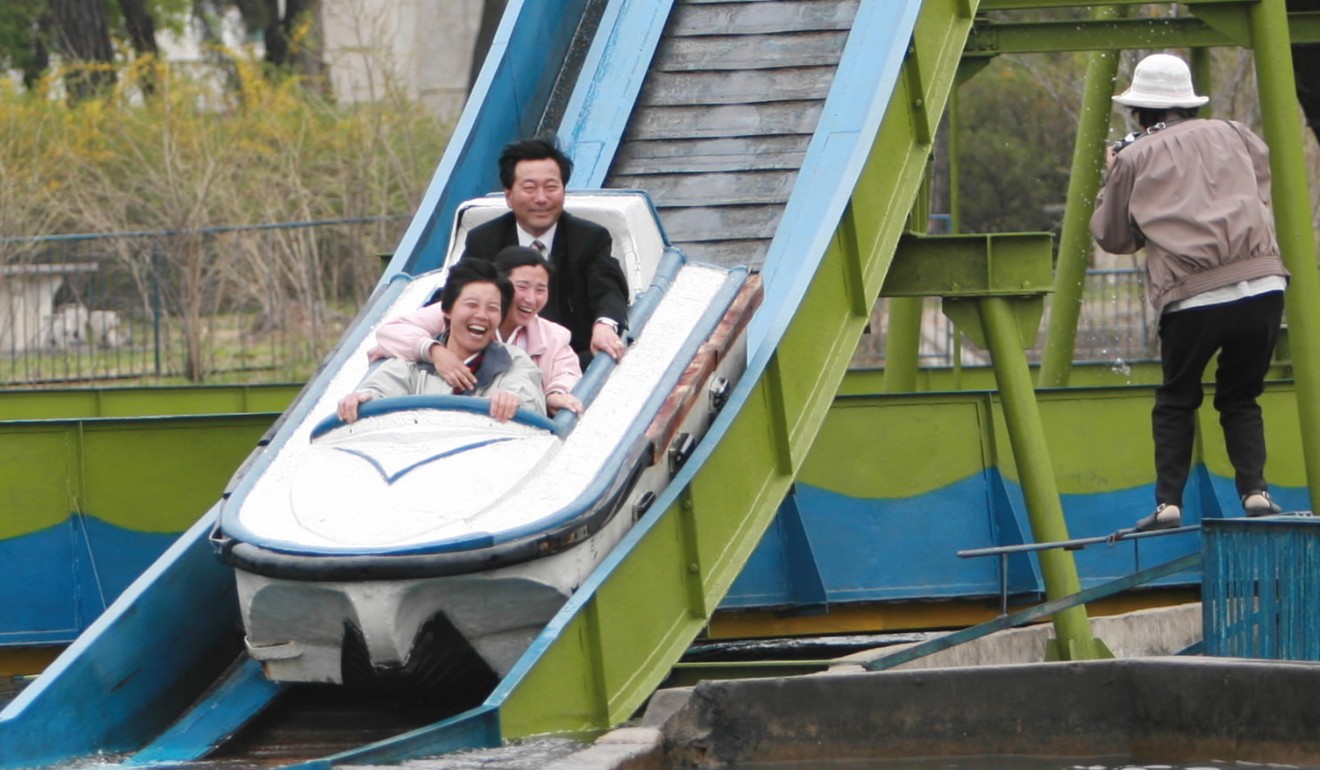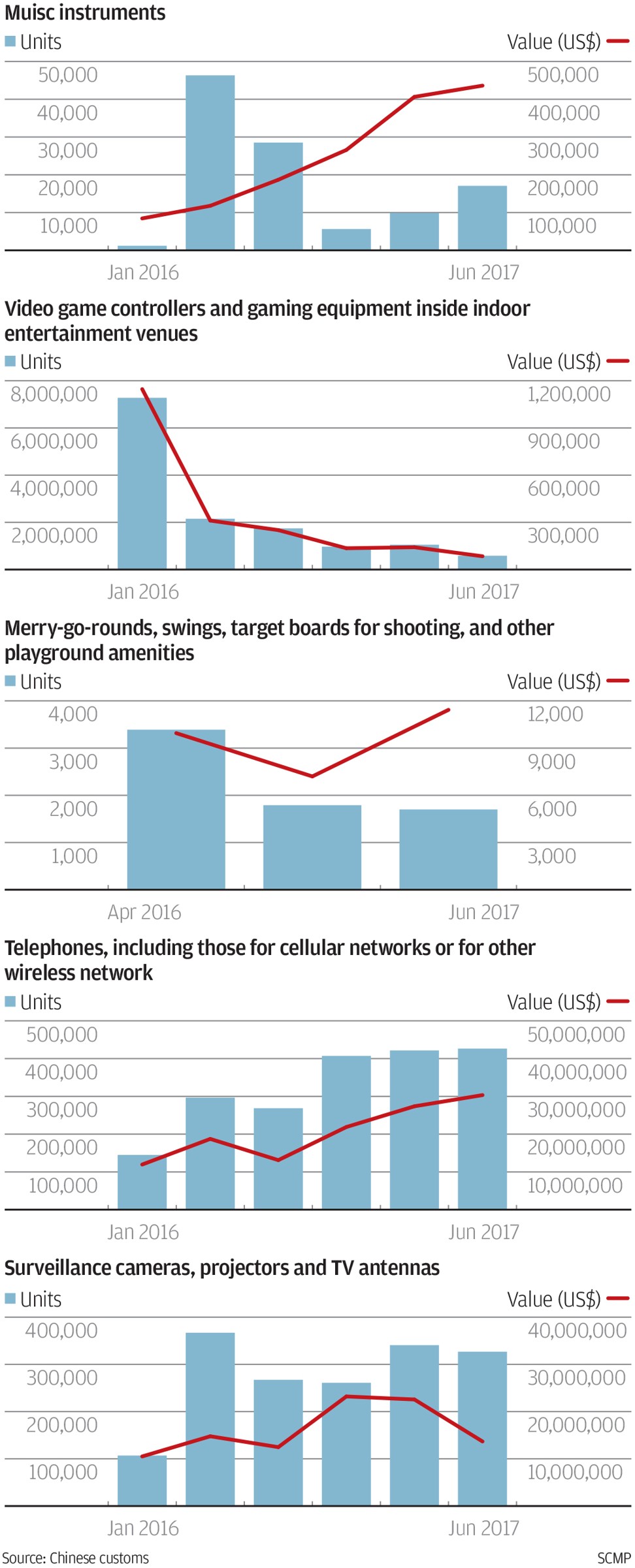
5 revealing things you may not know North Korea has imported from China
Imports that give a window into life in the hermit state
China is widely known as North Korea’s primary trading partner – a status it attained as the Hermit Kingdom increasingly isolated itself from the world.
The two communist countries’ friendly ties have been strained by accusations that China is sustaining the development of Pyongyang’s nuclear weapons programme, which more and more poses a threat to the US and its allies in the region.
Although China has agreed to stop buying North Korean iron, lead and coal as part of UN-approved sanctions last month, North Korea continues to be a major importer of Chinese goods. Imports from China represented 85 per cent of North Korea’s overall US$3.47 billion in imports in 2015, according to the Observatory of Economic Complexity, a US-based trade monitor.

A South China Morning Post examination of North Korea’s imports from China from the start of 2016 through mid-2017, showed that its importing of five rarely discussed items – out of more than 800 categories of imported goods – is about much more than mere survival.
(1) Gaming equipment
North Korea announced through its state-run media outlet Arirang Meari last week that the country’s new shooting simulation video game – in which US soldiers are the enemy – has “become very popular” as tension rises with North Korean leader Kim Jong-un and US President Donald Trump recently exchanging escalatory threats with overtones of war.
The video game “Hunting Yankee” was the latest used by Pyongyang as propaganda to cultivate patriotism, which followed the war-themed games “Confrontation War,” “Guardian” and “Goguryeo Battlefield”, also released earlier this month.

It was unclear whether these games were designed to be played on computers or phones. Given that most North Koreans do not own their own computers for personal home use, the importing of “video game controllers and gaming equipment inside indoor entertainment venues” from China could offer a glimpse into the closed country’s gaming and entertainment culture.
North Korea has spent over US$2 million on purchases of entertainment items under this category in the past 1.5 years. This grouping includes not only hand-held game consoles but also pool tables, dice and card games and coin operated electronic game machines, according to Chinese customs data.
The quantity of imports in this category, however, is in sharp decline as the number fell from 7 million pieces in the first quarter of 2016 to just above half a million pieces in the latest quarter of 2017.
(2) Surveillance cameras
The world was taken by surprise when it first learnt that North Korea had bought 85,570 surveillance cameras from China from 2009 to 2011, according to South Korea’s Chosun newspaper. But it will now come as no surprise to observers that North Korea imported nearly 20 times that number in the 1.5 years to mid-2017, reflecting a trend toward tighter monitoring of activity within the country.
A total of 1,669,725 units were recorded under the “surveillance cameras, projectors and TV antennas” group of Chinese exports to North Korea. No breakdown was provided that would show how many of those items were surveillance cameras.

Pyongyang replaced or newly installed more surveillance and security infrastructure in the country’s border region with northern China last December, according to Daily NK, a South Korean website that claims to have a network of informants in North Korea.
The reason for the move was damage to facilities from a flood last September, but also to address attempted defections from the country.
“Border control has actually grown a lot tighter ever since President Xi Jinping and Kim Jong-un both came into power, the countries became increasingly strict towards handling defection, and therefore both sides have increased surveillance and patrolling around the border area,” said Sokeel Park, director of research and strategy for Liberty, an NGO based in both Seoul and the US, which rescues North Korean refugees hiding in China and resettles them in South Korea or the US.
(3) Telephones
In case surveillance cameras are not sufficiently effective in monitoring North Koreans, analysts believe Pyongyang has increased imports of phones to increase ways of spying on its people.
In the past year, a growing trend has been observed in the country’s imports under the category of “telephones, including those for cellular networks or for other wireless network” – meaning both corded and mobile phone devices.
North Korea imported 144,891 units of Chinese phones in the first quarter of 2016, but the number recorded in the past three quarters was kept at more than 400,000. Pyongyang bought 426,500 Chinese phones from April to June this year.
Some analysts believe the phones may be used for more than communication. “By giving citizens new networked technologies like mobile phones and tablets, the government is able to automatically censor unsanctioned content and observe everything citizens are doing on their devices remotely,” Nat Kretchun, who authored a report titled “Compromising Connectivity” this year on North Korea’s digitalisation, told Reuters.
Reuters reported in 2015 that North Korea’s official mobile phone network, Koryolink, had around 3 million subscribers in a country of 24 million.
Yet, many North Koreans living near neighbouring northern China still smuggled in phones on Chinese networks to bypass state control and speak to foreign contacts or access outside information, according to human rights group Amnesty International.
(4) Amusement park amenities
At least six known amusement parks reported opening in North Korea between the 1970s and 2012.
North Korea acquired “merry-go-rounds, swings, target boards for shooting, and other playground amenities” in the second and third quarter of 2016 and in the second quarter of 2017, according to the customs data.
It was unclear whether these new imports would go to old parks or be placed at new ones, but North Korea’s parks are built primarily for tourists, and even its tumultuous relationship with the outside world has not deterred its ambitions of developing its tourism industry.
North Korea aimed to have the number of incoming visitors hit one million by the end of this year, although South Korean sources have estimated that 100,000 tourists visited the North in 2015, with 90 per cent being Chinese. Traditionally, only a few thousand Western tourists were understood to be visiting the closed kingdom annually, through registered travelling tour companies.
(5) Musical instruments
North Koreans’ love for music seemed to have remain undimmed regardless of the turning of political tides as imports of musical instruments from China havebeen on increase in the past nine months.
There are seven music-related categories on the long list of Chinese imports in North Korea: “piano and other keyboard instruments; string instruments such as harp, violin and guitar; wind instruments; percussion; electronic instruments such as electronic guitar and keyboard; music boxes, fairground organs and accordions; and small parts of music instruments”.
The category seeing the greatest number of imports among musical instruments was “music boxes, fairground organs and accordions”, with 68,670 products being imported from China to North Korea in 1.5 years. In contrast, just 300 wind instruments and 503 pianos were sent into the country in the same period.
Although there are no breakdowns to show which imported instrument is most popular, all teachers were required to play the accordion in the 1990s, according to journalist Barbara Demick’s seminal book on North Korean life, Nothing to Envy, published in 2009. The box-shaped instrument was known as the “people’s instrument” since it was portable enough to carry along when doing hard labour in the fields, where some would sing North Korean folk songs while others would play the instrument, according to the book.
The premier state instrumental ensemble, The Unhasu Orchestra, which primarily uses Western instruments, is the country’s most visible classical music organisation and has performed internationally. Kim Jong-un’s wife, Ri Sol-ju, was a singer for the orchestra.



